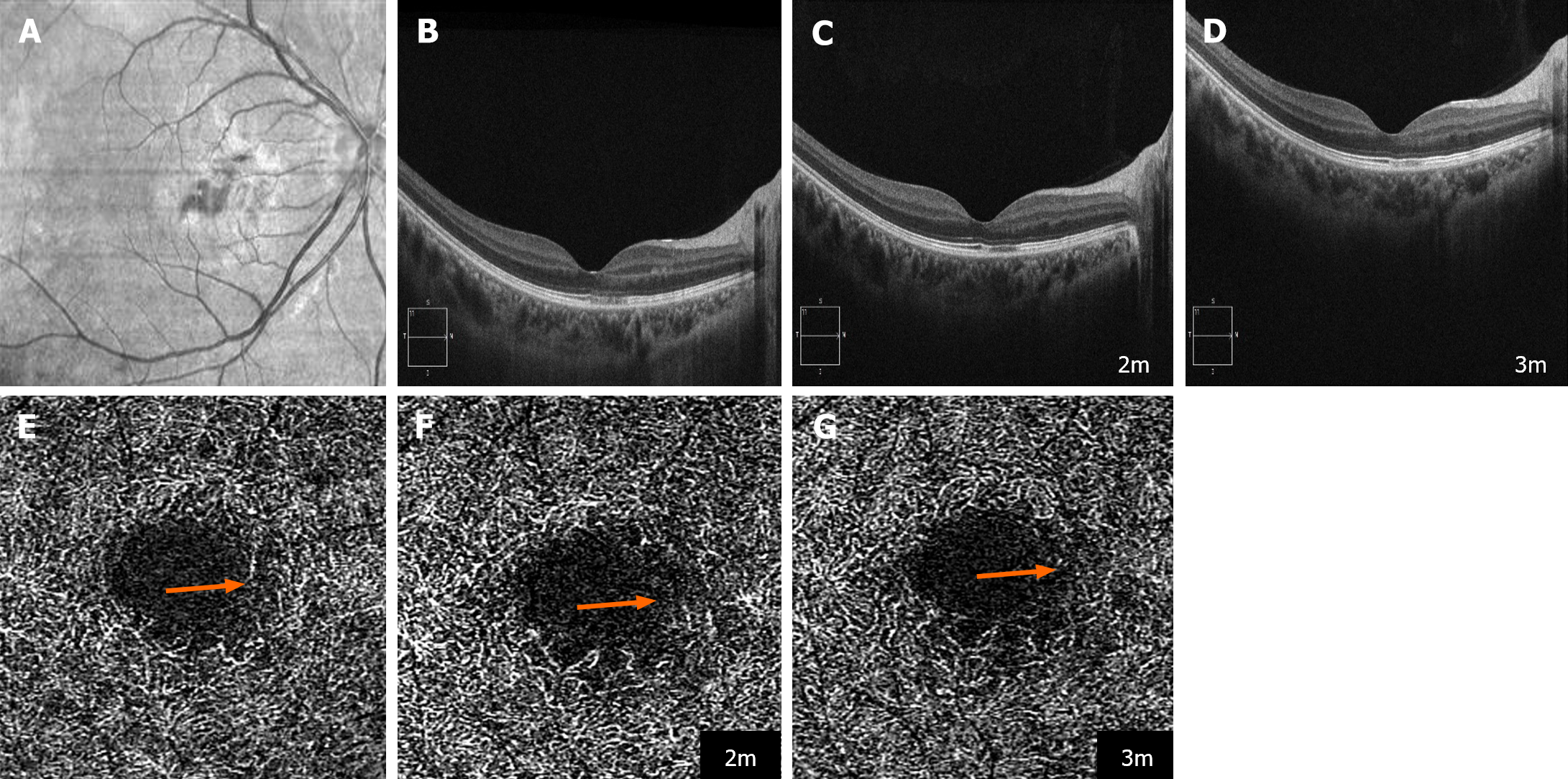Copyright
©The Author(s) 2024.
World J Clin Cases. Sep 6, 2024; 12(25): 5775-5783
Published online Sep 6, 2024. doi: 10.12998/wjcc.v12.i25.5775
Published online Sep 6, 2024. doi: 10.12998/wjcc.v12.i25.5775
Figure 3 Multimodal imaging evolution of acute macular neuroretinopathy with paracentral acute middle maculopathy in the right eye of Case 3.
A: Near-infrared imaging shows hyporeflective lesions within the macular area, indicative of the interplay between acute macular neuroretinopathy and paracentral acute middle maculopathy; B-D: Sequential optical coherence tomography (OCT) B-scans detail the progression of the lesion. Initially, hyperreflective lesions in the outer plexiform layer coexist with hyporeflective lesions in the ellipsoid zone/interdigitation zone (IZ) and hyperreflective lesions in the inner nuclear layer within the macular region. By 2 mon, the lesions in the IZ transition to hyporeflective foci, a change that persisted in subsequent follow-up evaluations; E-G: Tracked OCT angiography (OCTA) (Plex Elite 9000; Carl Zeiss Meditec, Inc., Dublin, CA, United States), targeting the deep capillary plexus, illustrates a gradual reduction in the flow signal (indicated by orange arrow), signifying a decrease in vascular density over the course of the follow-up.
- Citation: Bi C, Huang CM, Shi YQ, Huang C, Yu T. Acute macular neuroretinopathy following COVID-19 infection: Three case reports. World J Clin Cases 2024; 12(25): 5775-5783
- URL: https://www.wjgnet.com/2307-8960/full/v12/i25/5775.htm
- DOI: https://dx.doi.org/10.12998/wjcc.v12.i25.5775









